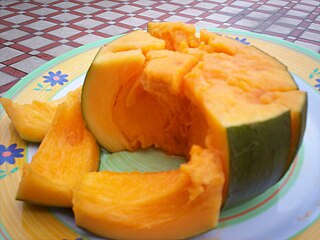
The dark long-tongued bat is a species of bat from South and Central America. It was formerly considered monotypic within the genus Lichonycteris, but is now recognized as one of two species in that genus, along with the pale brown long-nosed bat. It is small species of bat, with adults weighing 6–11 g (0.21–0.39 oz) and having a total length of 46–63 mm (1.8–2.5 in).

Quararibea cordata, the South American sapote or chupa-chupa, is a large, semi-deciduous, fruit tree, native to Amazon rainforest vegetation in Brazil, Colombia, Ecuador, and Peru. It bears orange-yellow fruit which are soft, juicy, sweet and contain 2-5 seeds. Fruit is usually eaten out of hand, though it may be juiced.

Quararibea is a genus of flowering plants in the family Malvaceae.

Quararibea aurantiocalyx is a species of flowering plant in the family Malvaceae. It is found in Costa Rica and Panama. It is threatened by habitat loss.
Quararibea dolichopoda is a species of flowering plant in the family Malvaceae. It is found only in Panama. It is threatened by habitat loss.
Quararibea dolichosiphon is a species of flowering plant in the Bombacaceae family. It is found only in Panama.
Quararibea gomeziana is a species of flowering plant in the family Malvaceae. It is found in Costa Rica and Panama. It is threatened by habitat loss.
Quararibea jefensis is a species of flowering plant in the family Malvaceae. It is found only in Panama. It is threatened by habitat loss.
Quararibea pendula is a species of flowering plant in the family Malvaceae. It is found in Costa Rica and Panama. It is threatened by habitat loss.

Quararibea platyphylla is a species of flowering plant in the family Malvaceae. It is found in Costa Rica and Panama. It is threatened by habitat loss.
Quararibea pterocalyx, the wild palm or cinco dedos, is a species of flowering plant in the family Malvaceae. It is found in Colombia, Costa Rica, Panama, and Venezuela. It is threatened by habitat loss.
Quararibea sanblasensis is a species of flowering plant in the family Malvaceae. It is found in Colombia and Panama. It is threatened by habitat loss.
Quararibea velutina is a species of flowering plant in the family Malvaceae. It is found only in Peru.
Quararibea yunckeri is a species of flowering plant in the family Malvaceae. It is found only in Honduras.
Beauprea congesta is a species of plant in the family Proteaceae. It is endemic to New Caledonia.
Helicia albiflora is a species of plant in the family Proteaceae. It is endemic to Papua New Guinea. It is threatened by habitat loss.
Helicia amplifolia is a species of plant in the family Proteaceae. It is endemic to Papua New Guinea. It is threatened by habitat loss.
Helicia latifolia is a species of plant in the family Proteaceae. It is endemic to Papua New Guinea. It is threatened by habitat loss.
Helicia neglecta is a species of plant in the family Proteaceae. It is endemic to Papua New Guinea. It is threatened by habitat loss.
Miconia santaritensis is a species of plant in the family Melastomataceae. It is endemic to Panama. It is threatened by habitat loss.





